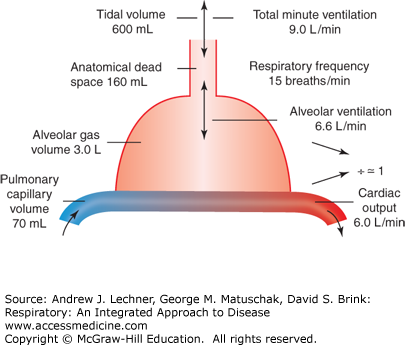

On occasion, some of the alveoli are nonfunctional or only partially functional because of absent or poor blood flow through the adjacent pulmonary capillaries. So thanks for watching and I hope to see you again soon.The method just described for measuring the dead space (see slide 36) measures the volume of all the space of the respiratory system other than the alveoli and their other closely related gas exchange areas this space is called the anatomic dead space. If you want to learn how Medmastery can help you become a great clinician, make sure to watch the about mastery video. Absolutely, make sure to check out the course this video was taken from and to register for a free trial account which will give you access to select the chapters of the course.

So, an elevation in arterial carbon dioxide tension would only be seen when the patient can't sustain the overall level of ventilation necessary to compensate. These individuals can compensate for the increase in Dead Space by increasing the overall level of ventilation to keep pa co2 constant. However, in most disorders characterized by an increase in lung areas with high v Q hypercapnia does not occur. Conceptually, any alveolar units with v Q greater than one, but not infinity, can be described as if the units were functionally equivalent to areas of Deadspace.Īreas of high v Q or physiologic Deadspace represent regions of wasted ventilation as far as carbon dioxide elimination is concerned. Another form of abnormal ventilation perfusion relationship can be seen as a result of alveolar units with ventilation, but no persistent perfusion.


 0 kommentar(er)
0 kommentar(er)
